
FEW-BODY SYSTEMS
Scope & Guideline
Advancing Understanding in Atomic and Molecular Physics
Introduction
Aims and Scopes
- Few-Body Quantum Mechanics:
Research that delves into the quantum mechanical treatment of few-body systems, exploring theoretical frameworks and computational methods to solve the Schrödinger equation for systems with few interacting particles. - Nuclear Physics Applications:
Studies that apply few-body approaches to nuclear physics problems, including nuclear structure, reactions, and scattering phenomena, particularly involving nucleons and light nuclei. - Exotic States and Resonances:
Investigations into exotic states such as tetraquarks, pentaquarks, and other multiquark states, including their formation, properties, and interactions. - Effective Field Theories:
Development and application of effective field theories (EFTs) to describe few-body interactions and phenomena, focusing on low-energy regimes and the implications of chiral symmetry. - Experimental Studies and Data Analysis:
Research that includes experimental results related to few-body systems, emphasizing data analysis, interpretation of scattering experiments, and comparisons with theoretical predictions. - Interdisciplinary Approaches:
Integration of concepts from condensed matter physics, astrophysics, and quantum information science to address complex few-body problems.
Trending and Emerging
- Efimov Physics:
Research focusing on Efimov states and their implications in ultracold atomic gases has gained significant traction, highlighting the unique phenomena arising from three-body interactions. - Multiquark States:
There is an increasing interest in exploring multiquark states, including tetraquarks and pentaquarks, with studies focusing on their properties, formation mechanisms, and experimental signatures. - Chiral Effective Field Theories (EFTs):
The application of chiral EFTs to few-body problems has become increasingly prominent, allowing for more accurate descriptions of low-energy interactions and nuclear forces. - Quantum Computing and Information Theory:
The intersection of few-body physics with quantum computing and information science is emerging, with research exploring the computational complexity of few-body problems and their implications for quantum simulations. - Nuclear Astrophysics:
Studies related to few-body systems in the context of nuclear astrophysics are on the rise, particularly focusing on the role of few-body interactions in stellar nucleosynthesis and neutron star physics.
Declining or Waning
- High-Energy Particle Physics:
Research focusing on high-energy particle collisions and interactions has seen a decline, as the journal has shifted more towards low-energy few-body interactions and nuclear structure studies. - Classical Mechanics Approaches:
The application of classical mechanics to few-body systems has diminished, as the field moves increasingly towards quantum mechanical treatments and relativistic approaches. - Non-Relativistic Models:
The reliance on non-relativistic models for few-body systems is waning, with a growing preference for relativistic frameworks that better capture the complexities of particle interactions at higher energies. - Phenomenological Models Without Rigorous Foundations:
There is a noticeable decline in the publication of purely phenomenological models that lack strong theoretical backing, as the journal emphasizes more rigorous and foundational theoretical approaches. - Simplistic Potential Models:
The use of overly simplistic potential models to describe interactions in few-body systems has decreased as more sophisticated and realistic models are developed and employed.
Similar Journals
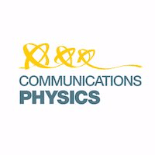
Communications Physics
Exploring the universe of scientific communication.Communications Physics is a premier open access journal published by Nature Portfolio, dedicated to disseminating high-quality research in the field of Physics and Astronomy. Since its inception in 2018, the journal has rapidly established itself as a vital platform for innovative scientific communication, boasting an impressive Impact Factor and achieving Q1 status in the 2023 category of Physics and Astronomy (miscellaneous). With a Scopus rank of #31 out of 243, placing it within the 87th percentile, Communications Physics attracts a global audience of researchers, professionals, and students eager to engage with cutting-edge findings. The journal supports open access, ensuring that research is freely available to the public, which enhances its visibility and encourages broader discussions within the scientific community. Located in Berlin, Germany, Communications Physics aims to bridge the gap between various disciplines within physics, fostering interdisciplinary collaboration and inspiring future research endeavors.
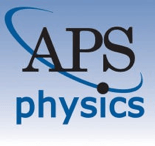
PHYSICAL REVIEW C
Exploring the Depths of Nuclear SciencePHYSICAL REVIEW C is an esteemed journal published by the American Physical Society, dedicated to advancing knowledge in the fields of nuclear and high-energy physics. With a proud ISSN of 2469-9985 and an E-ISSN of 2469-9993, it has established itself as a leading journal, currently ranked in the Q1 category for its field in 2023, positioning itself in the top tier of scholarly publications. Based in the heart of the United States, at One Physics Ellipse, College Park, MD, PHYSICAL REVIEW C is known for its rigorous peer-review process and is a vital platform for researchers to share their pioneering findings. As part of a prestigious lineup backed by an impressive impact factor, this journal garners significant attention, reflected in its Scopus ranking as #18 out of 87 in the Nuclear and High Energy Physics category, placing it within the 79th percentile. While it currently does not offer open access options, it remains an essential resource for professionals and students seeking to deepen their understanding of nuclear interactions, reaction dynamics, and the fundamental principles governing subatomic particles. The convergence of innovative research from 2016 to 2024 makes it a timely reservoir for groundbreaking studies, thus reinforcing its importance in the scientific community.
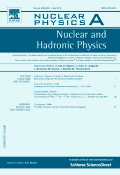
NUCLEAR PHYSICS A
Exploring the Depths of High Energy PhysicsNUCLEAR PHYSICS A, published by Elsevier, is a leading international journal dedicated to the fields of Nuclear and High Energy Physics. With an ISSN of 0375-9474 and E-ISSN 1873-1554, the journal has been pivotal in advancing research since its inception in 1967 and is set to continue influencing the discipline through 2025. It holds a commendable Q2 classification in the 2023 category of Nuclear and High Energy Physics, ranking 32nd out of 87 journals in its field according to Scopus, placing it in the 63rd percentile. NUCLEAR PHYSICS A provides valuable insights and disseminates cutting-edge research, aiding researchers, professionals, and students in their academic and practical pursuits. Though it does not currently offer open access, the journal remains a vital resource for those engaged in the exploration of nuclear phenomena and theoretical advancements in high-energy physics.
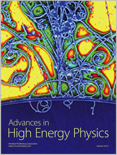
Advances in High Energy Physics
Exploring the Frontiers of Nuclear and High Energy PhysicsAdvances in High Energy Physics, published by HINDAWI LTD, is a premier open-access journal dedicated to the progressive field of Nuclear and High Energy Physics. With an ISSN of 1687-7357 and an E-ISSN of 1687-7365, this journal has been at the forefront of scientific discourse in high energy physics since its inception in 2007. The journal is notable for its impact within the community, currently holding a Q2 ranking in 2023 and positioned at #36 out of 87 in its category according to Scopus, highlighting its significant contribution to ongoing research and advancement in the field. Its accessible nature enables researchers, professionals, and students to engage with cutting-edge findings that shape our understanding of the universe. Spanning publications from 2010 through 2024, Advances in High Energy Physics serves as an invaluable resource for those looking to stay informed about the latest developments and methodologies in high energy physics across the globe.
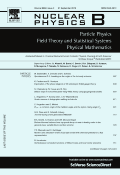
NUCLEAR PHYSICS B
Shaping the Landscape of Nuclear Science for Nearly 60 YearsNUCLEAR PHYSICS B, published by Elsevier, stands at the forefront of research in the dynamic field of Nuclear and High Energy Physics. Established in 1967, this prestigious journal has developed a reputation for excellence, now positioned in the Q1 category according to its 2023 quartile rankings. With an impressive Scopus rank of #21 out of 87 in its category and a commendable 76th percentile, it serves as a vital resource for scholars investigating the underlying principles of nuclear interactions and particle physics. The journal transitioned to an Open Access model in 2014, ensuring that groundbreaking research is accessible to a global audience. Its commitment to quality and innovation makes NUCLEAR PHYSICS B an essential platform for researchers, professionals, and students aiming to stay at the cutting edge of discoveries in this expansive field, contributing to the scientific discourse for nearly six decades.

Physical Review Research
Bridging ideas and innovation in physics and astronomy.Physical Review Research, published by the American Physical Society, is a premier open access journal dedicated to the dissemination of high-quality research across all areas of physics and astronomy. Since its inception in 2019, this journal has quickly established itself as a vital platform for researchers, achieving a prestigious Q1 ranking in the dynamics of Physics and Astronomy (miscellaneous) and holding a commendable position in the Scopus Rankings with a rank of #29 out of 243, placing it in the 88th percentile. With the commitment to fostering scientific collaboration and transparency, Physical Review Research offers unrestricted access to valuable findings, enabling researchers, professionals, and students alike to engage with cutting-edge contributions in general physics and astronomy. As it converges into its forthcoming years of publication, the journal remains dedicated to showcasing rigorous research and innovative ideas that drive the field forward.

Quantum Beam Science
Bridging Theory and Application in Quantum ResearchQuantum Beam Science, published by MDPI since 2017, is an esteemed open-access journal that occupies a pivotal role in the fields of atomic and molecular physics as well as nuclear and high-energy physics. Based in Switzerland, this journal embraces a global community of researchers dedicated to advancing our understanding of quantum phenomena through innovative experimental and theoretical approaches. With an impactful presence reflected in its category quartiles—ranking Q3 in both the Atomic and Molecular Physics, and Nuclear and High Energy Physics categories—the journal aims to bridge the gap between foundational research and practical applications of quantum technology. Since adopting an open-access model, Quantum Beam Science has fostered greater accessibility to groundbreaking studies, facilitating knowledge dissemination among researchers and professionals alike. This commitment to open science empowers the next generation of physicists to contribute to a rapidly evolving discipline, ensuring that critical advancements reach a diverse audience. Stay informed on the latest developments in quantum research as the journal covers a wide range of topics, making it an essential resource for students, academics, and professionals in the field.
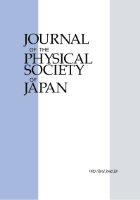
JOURNAL OF THE PHYSICAL SOCIETY OF JAPAN
Illuminating the Path of Scientific Inquiry since 1946The JOURNAL OF THE PHYSICAL SOCIETY OF JAPAN, published by the Physical Society of Japan, has been at the forefront of advancing knowledge in the field of Physics and Astronomy since its inception in 1946. With a commendable reputation reflected in its Q2 ranking within its category for 2023, this journal serves as a vital platform for disseminating high-quality research and innovative concepts. Researchers and professionals alike can engage with cutting-edge studies and reviews that span a diverse range of topics pivotal to the physical sciences. Although the journal does not currently operate with an open access model, it maintains a robust impact on the global physics community, evidenced by its placement in the 59th percentile among a competitive pool of 243 journals. With an unwavering commitment to bridging theory and application, the JOURNAL OF THE PHYSICAL SOCIETY OF JAPAN continues to inspire and cultivate scholarly discourse and collaboration across disciplines.
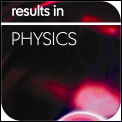
Results in Physics
Advancing Knowledge, Unleashing InnovationResults in Physics, an esteemed open-access journal published by ELSEVIER, has been a prominent platform for disseminating cutting-edge research in the field of physics since its establishment in 2011. With its ISSN 2211-3797 and E-ISSN 2211-3797, this journal proudly holds a Q2 ranking in the Physics and Astronomy category for 2023, showcasing its significance and quality within the scientific community. With a remarkable Scopus rank of #28 out of 243 in the general physics and astronomy domain, placing it within the 88th percentile, Results in Physics serves as a vital resource for researchers, professionals, and students alike, fostering a collaborative environment for the advancement of knowledge across various subfields. The journal aims to provide a rapid and unrestricted access to innovative findings, encouraging open scientific dialogue and enhancing the visibility of breakthrough research. Located in the Netherlands at RADARWEG 29, 1043 NX AMSTERDAM, Results in Physics continues to uphold its commitment to excellence and accessibility in the ever-evolving landscape of physics research.

Physics of Particles and Nuclei Letters
Pioneering Research for a Quantum FuturePhysics of Particles and Nuclei Letters, published by PLEIADES PUBLISHING INC, serves as a pivotal platform for the dissemination of cutting-edge research in the domains of particle and nuclear physics. With an ISSN of 1547-4771 and an E-ISSN of 1531-8567, this journal has been actively contributing to the scientific community since its inception in 2006 and continues to be influential, with a convergence period extending to 2024. While its open access options are limited, the journal is recognized for its rigorous peer-review process and commitment to quality, as reflected in its Scopus rankings across multiple categories, including a Q3 in Nuclear and High Energy Physics and Radiation in 2023. The journal is positioned to be a vital resource for researchers aiming to bridge theoretical understanding with practical applications in these highly specialized fields, fostering advances that resonate within atomic and molecular physics, radiology, and beyond. Its relevance continues to grow as the global scientific community seeks innovative solutions to complex problems in modern physics.